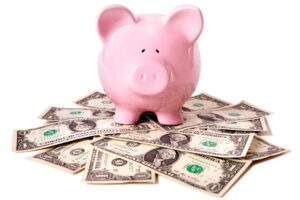 Food Safety Saves Money!
Food Safety Saves Money!
It’s hard to believe but it’s true! While there are up-front costs in time, training and labor, the same food safety regulations which seem so frustrating will also save money in the long run. Here are a few examples:
• Food Quality –
(a) Food spoilage bacteria begin to grow in frozen foods at 25 degrees F. a level far below the 41 degrees F. required by law. Thus, safe food temperatures save money, reducing food costs from discarding spoiled, poor quality food.
(b) Safe food storage rules such as ‘first in, first out’ (FIFO) and the ‘7 day rule’, while preventing the growth of bacteria, also provide for better quality, fresher products
(c) Cooling prepared foods rapidly, using the two stage cooling requirements, also reduces the impact on the food structure and produces a better tasting product
• Cleaning –
(a) A soiled environment results in more accidents (slips and falls), fires (soiled exhaust hood and ductwork) and pest problems (pest harborage in soil and grease, inefficient pesticide treatments). These all impact the food service’s bottom line
(b) Ask customers what sanitation means to them and they almost always mention cleanliness of the dining area and restrooms.
• Disorganization –
(a) From the food safety perspective, this increases the risk of cross-contamination but it also increases the time of production (finding utensils and ingredients) and the risk of accidents
• Legal Impact and Publicity –
While the failure to follow food safety rules carries a clear negative impact (increased risk of illness, legal action, reputation, insurance rating, employee morale), a proactive positive food safety environment (investment in food safety plans, HACCP, training programs) turns those same factors into driving motivators to increase customer traffic, improve business forecasts and reduce the bottom line. Health agencies, insurance agents and the public all recognize and appreciate these efforts.
